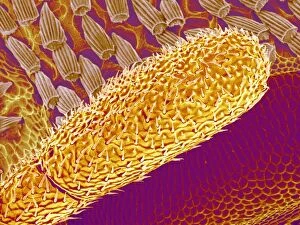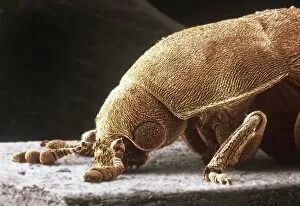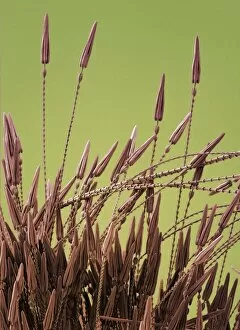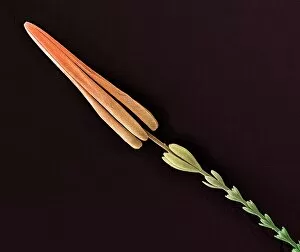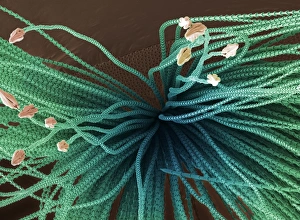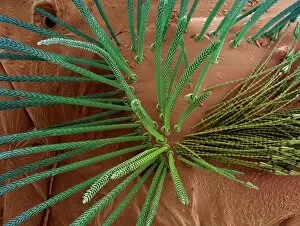Dermestidae Collection
"Dermestidae: Unveiling the World of Flesh-Eating Beetles and Carpet Beetles" Dermestidae, a fascinating family of beetles
All Professionally Made to Order for Quick Shipping
"Dermestidae: Unveiling the World of Flesh-Eating Beetles and Carpet Beetles" Dermestidae, a fascinating family of beetles, encompasses various species that have captured the attention of entomologists worldwide. Among them is Dermestes lardarius, commonly known as the larder beetle. With its distinctive black body adorned with yellowish-orange markings, this beetle has become a common inhabitant of pantries and food storage areas. Intriguingly, these beetles are not alone in their unique characteristics. The carpet beetle antenna (SEM C014 / 0348) showcases intricate details that aid in their sensory perception. Similarly, the SEM image (C014 / 0347) reveals the astonishing beauty hidden within a carpet beetle's exoskeleton. Another notable member of this family is Dermestes maculatus - an aptly named flesh-eating beetle. These scavengers play an essential role in nature by consuming decaying animal matter and accelerating decomposition processes. Their presence may be unsettling to some due to their diet preferences; however, they serve as valuable contributors to ecosystems. The hide beetle variant of Dermestes maculatus Degeer possesses distinct features that set it apart from its counterparts. Its ability to feed on dried animal hides has made it notorious among taxidermists and collectors alike. While both D. Maculatus and D. Lardarius share similarities in appearance and dietary habits, each species holds its own significance within the ecosystem they inhabit. Observing these creatures at different stages can be equally captivating – from larvae resembling tiny fuzzy caterpillars (as seen through SEM imaging), to fully developed adults showcasing their striking colors and patterns. Understanding Dermestidae goes beyond mere fascination; it aids researchers in forensic investigations where these insects often play crucial roles in determining postmortem intervals or identifying remains found at crime scenes.


